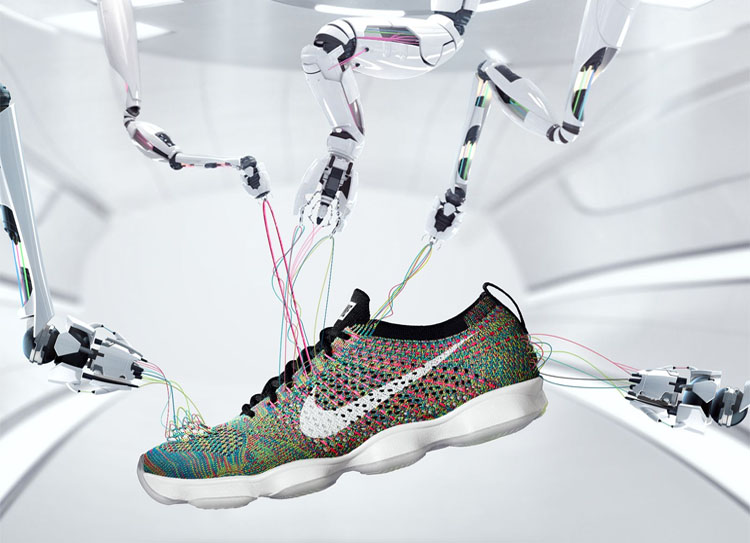
Technology of nike : A Deep Dive
Technology of nike, a global leader in athletic footwear, apparel, and equipment, is synonymous with innovation. From its inception in 1964, the company has continuously pushed the boundaries of sportswear technology, creating products that enhance performance, comfort, and style. This article explores the advanced technology that powers Nike’s products, driving its success and setting it apart in a competitive market.
1. Technology of nike Air Technology: Revolutionizing Cushioning
One of Nike’s most iconic innovations is the Nike Air technology, introduced in 1979 with the Nike Tailwind. This groundbreaking cushioning system, developed by aerospace engineer Frank Rudy, uses pressurized air encapsulated in a durable, flexible membrane to provide superior cushioning. The concept was simple yet revolutionary: reduce the weight of the shoe while enhancing comfort and performance.
Nike Air technology has evolved significantly over the decades. The introduction of the Air Max in 1987 marked a milestone, with visible air units in the midsole, allowing consumers to see and feel the cushioning in action. This design not only improved performance but also became a fashion statement. The evolution continued with advancements like the Air Zoom, Air VaporMax, and Air Max 720, each offering enhanced responsiveness, comfort, and style.
2. Flyknit: A Revolution in Fit and Flexibility
In 2012, Nike unveiled Flyknit technology, a game-changer in shoe design. Flyknit is a lightweight, form-fitting fabric made from high-strength fibers, which are precisely engineered to create a seamless upper. The technology offers multiple benefits: it reduces weight, minimizes waste, and provides a snug, sock-like fit that adapts to the wearer’s foot.
Technology of nike
Flyknit was first introduced in the Flyknit Racer, designed for marathon runners who demanded a lightweight, breathable shoe. Since then, it has been integrate into various Nike products, including running shoes, basketball shoes, and even lifestyle sneakers. The use of Flyknit has not only improved performance but also aligned with Nike’s sustainability goals by reducing material waste by approximately 60% compared to traditional cut-and-sew methods.
3. Nike React: Unmatched Cushioning and Energy Return
Nike React is a proprietary foam cushioning technology that delivers an exceptional combination of softness, responsiveness, and durability. Introduce in 2017 with the Nike React Hyperdunk 2017 Flyknit, React foam was design to meet the demands of high-impact sports like basketball, where athletes require maximum energy return and comfort.
The foam’s unique composition provides a bouncy, responsive feel, while its lightweight nature reduces the overall weight of the shoe. Nike React has since been incorporated into various product lines, including running, training, and lifestyle shoes. The popularity of React technology lies in its ability to offer both comfort and performance, making it a favorite among athletes and casual wearers alike.
4. Nike Adapt: The Future of Smart Footwear
Nike Adapt represents the pinnacle of innovation in footwear, bringing the concept of self-lacing shoes to reality. Inspired by the iconic self-lacing shoes from the 1989 movie “Back to the Future Part II,” Nike introduced the HyperAdapt 1.0 in 2016, followed by the more advanced Nike Adapt BB in 2019.
Nike Adapt shoes feature an advanced power-lacing system that automatically adjusts to the wearer’s foot, providing a customized fit at the push of a button or through a smartphone app. The system uses a series of motors and sensors to detect the tension needed and adjust the laces accordingly. The Adapt technology not only offers convenience but also enhances performance by ensuring a consistent fit during sports activities.
Nike continues to refine this technology, integrating it with other smart features such as app-based controls, customizable light settings, and firmware updates. As wearable technology advances, Nike Adapt is poised to play a significant role in the future of smart footwear.
5. Flywire: Strength Without Weight
Introduced in 2008, Nike Flywire technology is another innovation designed to enhance performance while reducing weight. Flywire consists of strategically placed filaments that function like cables on a suspension bridge, providing support exactly where it’s needed. These filaments are embedded in the shoe’s upper, allowing for a lightweight yet incredibly strong structure.
Flywire technology debuted in the Nike Zoom Victory, a track spike designed for elite athletes. The result was a shoe that offered a secure fit without the bulk of traditional materials. Since then, Flywire has been used across various Nike products, including running shoes, basketball shoes, and training footwear. The technology continues to evolve, with newer versions being lighter, stronger, and more adaptive to different sports.
6. Nike Free: Natural Motion Engineering
Nike Free technology was developed in response to research suggesting that barefoot running can help strengthen foot muscles and improve overall performance. Launched in 2004, Nike Free shoes feature a flexible sole with deep sipes (grooves) that allow the foot to move naturally, mimicking the sensation of running barefoot.
The Nike Free concept is based on the principle of natural motion, encouraging a more efficient running style by allowing the foot to flex, expand, and contract with each stride. Over the years, Nike has continued to refine Free technology, offering different levels of flexibility to cater to various training needs. The result is a versatile shoe that provides both the freedom of natural movement and the protection of a traditional running shoe.
7. Nike ZoomX: Elite-Level Performance
Nike ZoomX is a high-performance foam technology design for elite athletes who require maximum energy return and lightweight cushioning. Introduced in 2017 with the Nike Zoom Vaporfly 4%, ZoomX foam was develope in response to the needs of long-distance runners who demand speed and efficiency.
The ZoomX foam is the lightest and most responsive foam Nike has ever created, offering up to 85% energy return. This makes it ideal for marathon runners, sprinters, and other athletes who need to maintain peak performance over extended periods. ZoomX has been a critical component in several of Nike’s most successful running shoes, including the Vaporfly series, which has worn by numerous world record-holding athletes.
8. Nike Joyride: Personalized Cushioning with Bead Technology
Nike Joyride, introduced in 2019, offers a unique approach to cushioning with the use of TPE (thermoplastic elastomer) beads. These tiny beads are strategically place in pods within the shoe’s sole, providing personalize cushioning that adapts to the wearer’s foot and movement.
As the foot strikes the ground, the beads compress and expand, offering a dynamic response that adapts to the wearer’s stride. This technology is particularly beneficial for runners seeking a comfortable, cushioned ride that reduces impact on the joints.
9. Dri-FIT: Keeping Athletes Dry and Comfortable
Nike’s commitment to performance extends beyond footwear, with its Dri-FIT technology playing a crucial role in apparel. Dri-FIT is a moisture-wicking fabric that helps keep athletes dry and comfortable by pulling sweat away from the skin and onto the surface of the fabric, where it quickly evaporates.
Introduced in 1991, Dri-FIT has become a staple in Nike’s athletic apparel. Used in everything from t-shirts and shorts to socks and accessories. The technology is design to perform in various conditions, making it ideal for both high-intensity workouts and everyday wear. Nike continues to enhance Dri-FIT with additional features like UV protection and anti-odor treatments. Ensuring that athletes can perform at their best, regardless of the environment.
10. Sustainability Initiatives: Moving Toward a Greener Future
Nike’s technological innovations are not limit to performance; they also extend to sustainability. The company has made significant strides in reducing its environmental impact through various initiatives and technologies.
One of the most notable is Nike’s Move to Zero campaign, aimed at achieving zero carbon and zero waste. This initiative includes the use of recycled materials in products, such as the Nike Space Hippie collection. Which uses materials derived from factory scraps and recycled plastic bottles. Nike’s Flyleather, a sustainable alternative to traditional leather, with at least 50% recycle natural leather fiber. Reducing water use and carbon emissions.
Additionally, Nike’s Circular Design Guide promotes the creation of products with a longer life cycle. Encouraging designers to consider the end-of-life impact of their creations. These efforts reflect Nike’s commitment to sustainability. Ensuring that its technological advancements not only enhance performance but also contribute to a healthier planet.
Conclusion: Nike’s Unstoppable Drive for Innovation
Nike’s success can be attribute to its relentless pursuit of innovation. Which has led to the development of some of the most advanced technologies in sportswear. From the revolutionary Nike Air to the futuristic Nike Adapt. The company’s commitment to pushing the boundaries of design and performance is evident in every product.
As Nike continues to explore new frontiers in technology. It remains focused on meeting the evolving needs of athletes and consumers. Whether it’s through enhanced cushioning. Adaptive fit systems, or sustainable materials, Nike’s technological advancements are setting the stage for the future of sportswear. The brand’s ability to blend performance, comfort. And style ensures that it will remain at the forefront of the industry for years to come.


